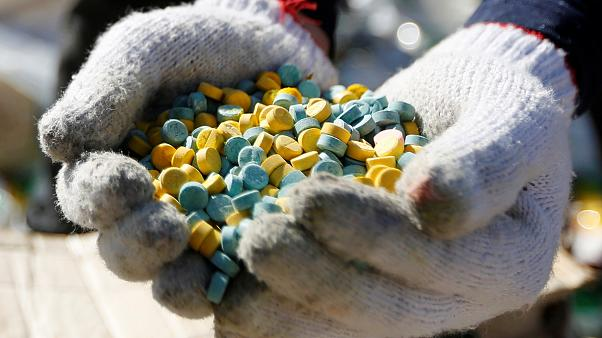Global Increase in Drug Use Over Nine Years
According to the latest United Nations report, 269 million people worldwide used drugs in 2018, which is a 30% increase compared to 2009. The “World Drug Report 2020,” published by the UN Office on Drugs and Crime (UNODC) based on 2018 data, highlights that these individuals consumed cannabis, cocaine, opium, and synthetic drugs.
UNODC experts found that out of the 269 million drug users, 35.6 million required medical assistance due to drug dependence. Opioids (heroin and opium) were identified as the most dangerous drugs, with their use most often leading to fatal overdoses.
Cannabis remains the most widely used drug, with about 192 million users. The United States has the highest prevalence of cannabis use, followed by increasing consumption in the United Kingdom, Italy, and Germany.
COVID-19 and the Darknet
The UNODC report notes that the COVID-19 pandemic has had long-term effects on drug trafficking and distribution routes. Measures taken by various countries to combat the spread of the virus have led to drug shortages, higher prices, and reduced quality.
While there was a temporary decline in darknet drug transactions in 2017, by 2020, experts observed a rise in the number of people purchasing drugs through this channel. The report links this trend to COVID-19 restrictions, which made it harder for end users to find street dealers. There are signs of increased darknet activity in some European drug markets in the first quarter of 2020, mainly related to retail cannabis sales.
Drug Trends in Russia and Central Asia
According to UNODC, Russia and Central Asian countries have seen a shift from opioid use to stimulant drugs. Methamphetamine, various cathinones (including mephedrone and alpha-PVP), are now widely available on the Russian drug market. Russian authorities reported a sharp increase in the discovery of clandestine drug labs, with a 70% rise over three years, reaching 68 labs in 2018.
The emergence of synthetic drugs has significantly changed the drug market in Russia and Central Asia, likely due to a decrease in opiate consumption. Data from 2008 to 2018 show a significant reduction in both the use and trafficking of opiates in these regions.
The report suggests that the appearance of “new drugs” in Russia is likely driven by supply, partially linked to the rapid development of the darknet in the country. For example, a non-representative sample of internet users indicated that Russia may have the highest proportion of people buying drugs via the darknet globally: from 46% in January 2018 to 86% in January 2020. While these figures should be interpreted with caution, they support evidence of the darknet’s deep penetration in Russia, especially with the rise of the Russian-language “Hydra” platform.
Drug Seizures Worldwide
In 2018, authorities worldwide seized 5,610 tons of cannabis, 1,131 tons of cocaine, 704 tons of opium, 228 tons of methamphetamine, 139 tons of heroin and morphine, 21 tons of amphetamine, and 12 tons of ecstasy.
“From 2009 to 2018, the volume of seized amphetamines quadrupled. Although global control over precursors is improving, drug traffickers and manufacturers are using chemicals designed to bypass international controls to synthesize amphetamine, methamphetamine, and ecstasy. Heroin and cocaine production is at its highest level in recent years,” emphasized UNODC Executive Director Ghada Fathi Waly.



